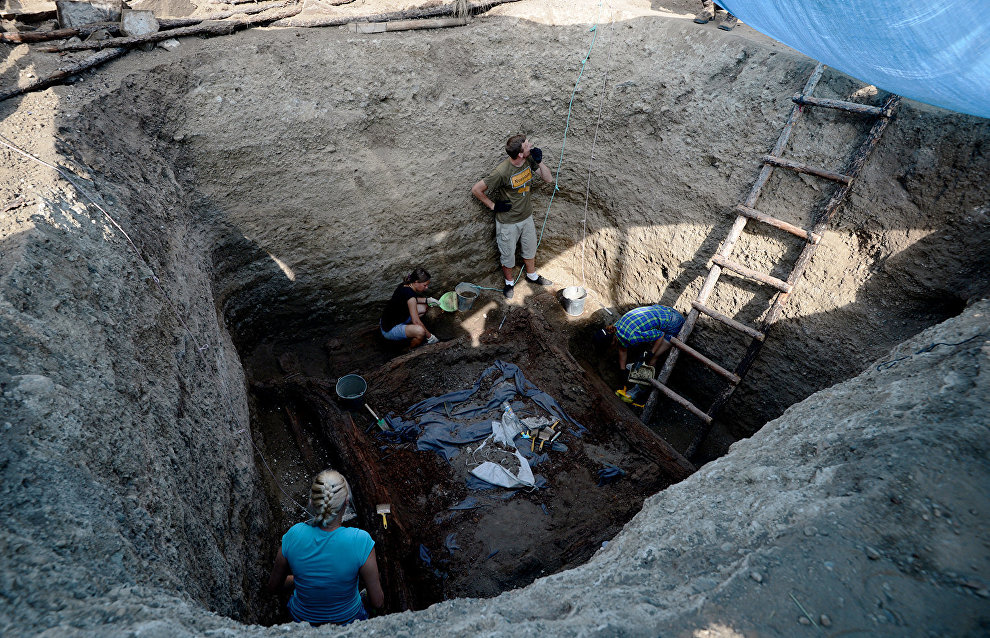Evidence of ancient Yamal-Novgorod trade route found
Specialists from the Arctic Research Center working at archeological landmark Ngarka-Yedyotayakha 2 in the Yamal-Nenets Autonomous Area on the Yamal Peninsula have unearthed two keys from Veliky Novgorod, used to unlock chests dating back to the first half of the 12th century. They also discovered a copper pot from the Cis-Ural area and traces of copper-smelting production, as well as other artifacts. These finds confirm scientists' conjectures that a northern trade route had linked the peninsula's residents with major medieval centers and neighboring regions.
"We do not claim that Novgorod merchants reached what is now the Yamal-Nenets Autonomous Area. Most likely, trade outposts were established in neighboring territories. This made it possible to deliver goods to the Polar Ural area and to Yamal stage by stage. Permanent contacts between the Cis-Ural and Trans-Ural areas show the existence of trade routes and indicate that outposts were deployed on Polar Ural mountain passes," Andrei Plekhanov in charge of the excavation project and a senior research associate with the History and Archeology Sector at the Arctic Research Center, explained.
Earlier, scientists found only one key from Novgorod here in 2007, that is, at the Nakhodka Bay community on the Kara Sea coast. The two new keys revealthat the Yamal Peninsula's medieval residents owned private property and maintained stable commercial relations with Novgorod.
The Ngarka-Yedyotayakha 2 community was discovered in 2019 during archeological prospecting at the confluence of the Ngarka-Yedyotayakha River and the Zyryanskaya Ob Stream. Specialists discovered several cultural layers at the 100 square meter excavation site. The lower layers contained ceramic fragments dating to the 10th-8th centuries BC (Late Bronze Age), part of the Kheyakhinskaya culture, as well as stone arrow tips and fragments of them. Other finds date back to the 4th-6th centuries AD (Karymsky Stage) and the 9th-2th centuries AD (Tiuteisalinsky Stage).
Scientists also found evidence confirming the existence of metal-production facilities in medieval Yamal whose residents processed copper. A pouring gate and metal-smelting residue were discovered at the excavation site. Archeologists also discovered various tools, including metal hooks and a chisel with a reindeer-horn handle. Tundra residents imported copper and used it sparingly. They did not throw metal residue away, and old items were re-melted for making new ones.
Scientists want to send all the finds to the Shemanovsky Museum/Exhibition Complex in Salekhard, the Yamal-Nenets Autonomous Area.
